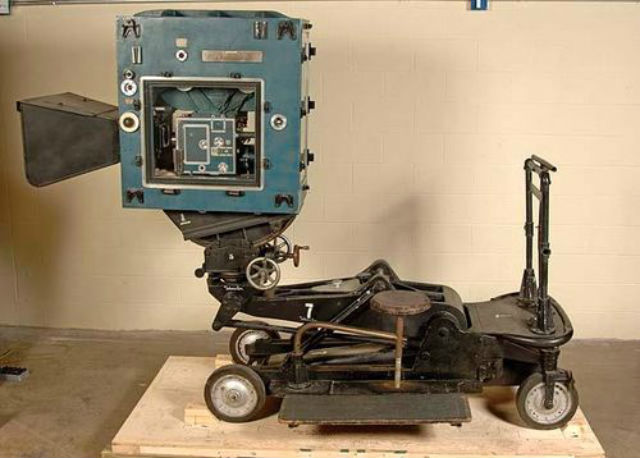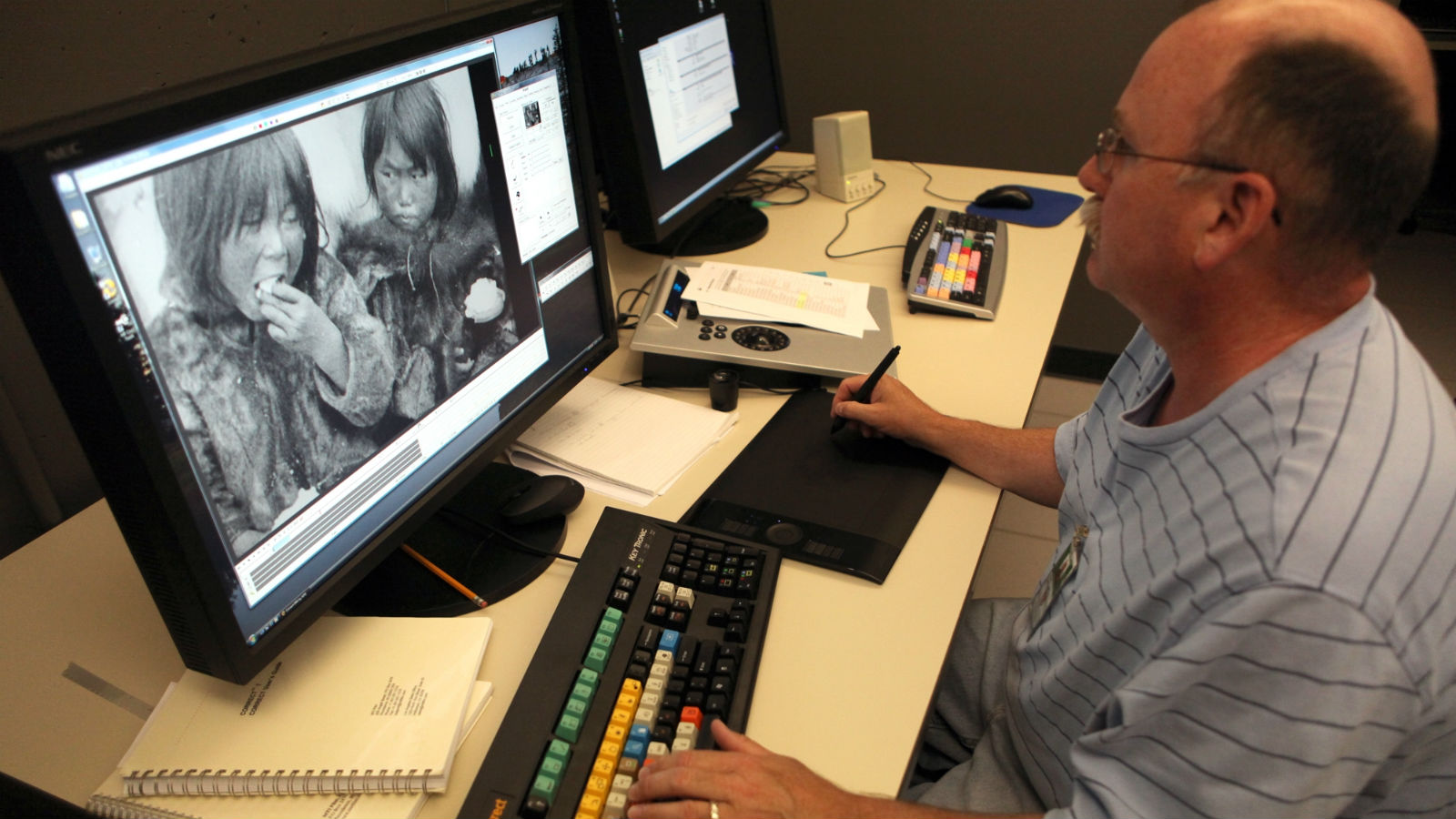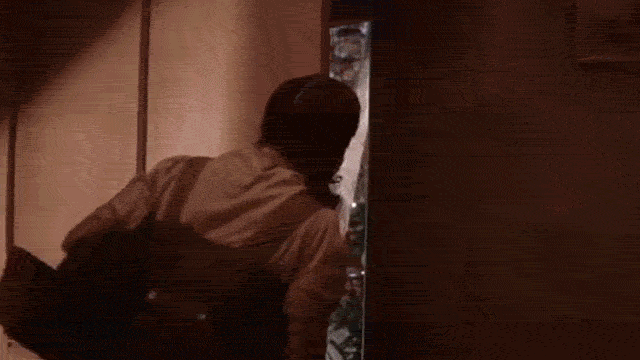Today’s moviegoers are a jaded bunch — it seems to require 3D visuals and advanced audio systems just to get a rise out of them. But it wasn’t always this tough in Tinseltown; there was once a time when something as basic as colour film was sufficient to blow an audience’s collective mind.
The Early Days of Colorisation
Film audiences have actually been enjoying colour movies nearly as long as film itself has been around. The very first such technique required each individual cell be coloured by hand, utilising extremely fine brushes and water-based translucent dyes. This method was extremely labour-intensive and could only be applied after the black and white film stock had been developed. As such, early hand-shaded films tended to be exceedingly short — typically no longer than a few hundred feet of celluloid in total — such as the works of Georges Méliès. And even at the practice’s height of popularity in the 1920s, only the biggest blockbusters of the day — such at 1924’s Greed, 1925’s The Phantom of the Opera, or The Last Days of Pompeii in 1926 — received this treatment.
Not only was hand-colouring film tedious and exacting work, the results would vary from frame to frame as differing concentrations of dye would often be applied. These drawbacks led production houses to begin looking at more efficient ways of adding colour to their film stocks in the early 1910s, specifically with the use of stencils.
The basic idea behind stencilling was the same as hand colouring — apply tints and dyes to existing film stock — but with slightly less work. Made famous by the French Pathé company and originally marketed as PathéColour, stencilling worked essentially the same way as modern silk screening. It used a glass master plate etched with the outline of the the cell’s captured image. This plate would cover only certain areas of the black and white film, allowing certain tints to only reach certain regions of the film cell — ie, all the yellow bits would be left uncovered by one stencil, all the red bits would be left by another, and all the blue bits exposed by a third. By rolling on the appropriate tint with the appropriate stencil, an entire cell could be coloured in just a few passes — usually between three and six of them.
To avoid making some poor schmuck etch those plates by hand, as was the case early in the technique’s development, image cutting machines were developed. This was a needle-tipped tool attached to a tracing rig — not unlike the key cutting machine at the hardware store — that allowed the technician to follow an outline of the image on a projected, magnified guide. The enlarged image would then be transcribed back down to the proper size using a panograph. You can find examples of this technique in such seminal films as The Birth of a Nation from 1915 or 1916’s Intolerance.
The most common post-production colorisation technique, however, was tinting. While the other methods insisted on staying inside the lines, tinting simply slathered a single colour over the entire cell to invoke an overall mood or feel for the scene. 1903’s The Great Train Robbery, for example, utilised yellow washes for lantern-lit cavern scenes and blue tints to simulate night.
Tinting’s primary advantage was its relative ease of use. Instead of dyeing individual sections of individual cells, this simple process involved cutting the celluloid into chunks of the the appropriate length, dyeing them a specific colour, and then reassembling the strips back into a complete film. It proved so effective that it remained in use well into the 1940s.
Let There Be Technicolor
The advancement from these early methods to full-colour film doesn’t follow a steady trajectory by any means. By the end of the 1920s, nearly two dozen companies held patents for film colorisation techniques — most of which could only be accomplished with assembly line-style production. That changed with the advent of a full-colour process that would go on to become the most famous film colour in cinematic history: Technicolor.
The process was originally invented by Herbert Kalmus — who also co-founded the Technicolor Corporation — as a two-colour additive system in 1916. When Technicolor officially debuted on the Silver Screen in 1929, it became an immediate smash hit. That initial success was quite brief, though, since the Great Depression began the next year. Though the film industry would struggle through the following years of economic catastrophe, the technology behind Technicolor film continued to advance. In 1932, a pair of inventors named Burton Wescott and Joseph A. Ball created the world’s first three-colour movie camera. It produced a much greater range of colours than the previous two-colour additive or subtractive methods by exposing a trio of specially-coated black and white film strips to incoming light divided by a prism. Each of the three split-light beams would pass through a red, green, or blue filter and imprint its associated film strip with a specific wavelength of light. These three strips of negatives were then used to create printing matrices that would guide the application of CMYK (cyan, magenta, and yellow) dyes onto a single strip of film, resulting in a single, full-colour negative.

From 1922 until 1952, your film was dog meat if it didn’t use Technicolor. Everything from The Wizard of Oz and Gone With the Wind to An American in Paris and Fantasia were shot in Technicolor. Nobody cared that the process resulted in garishly saturated, unnatural hues — the technique was a hit with audiences, and this was the age of Glorious Technicolor.
The technique came with a steep price-tag however, typically adding about $US300,000 to the production costs of each film and requiring the on-set presence of a “Technicolor expert” — typically Kalmus’ wife, Natalie — to “advise” on the film’s cinematography. In response to these diva demands, a number of other companies developed their own colour film processes like Eastman Colour’s polychromatic “monopack” colour film, as well as DeLuxe, TruColor, and Warner Colour. The emergence of this competition severely hampered Technicolor’s business, and the technology fell into disuse through the 1960s — until Francis Ford Coppola revived it for his 1972 masterpiece, The Godfather.

Painting With Pixels
Though the company never reclaimed the overwhelming market dominance it enjoyed during the first half of the century, Technicolor and its rivals continued to prosper through the 1970s. Around that time, a pair of Canadians named Wilson Markle and Christian Portilla proved the usefulness of computer-aided colorisation in punching up monochrome footage of the Apollo moon missions.
This modern method of computer-based colorisation starts with the highest quality monochrome film stock available. This film is first scanned and digitised. Then a technician will analyse the grey levels and perceived brightness of the footage before applying specified colours to each object in the film. These can include standardised “memory” colours — -like the blue of the sky or flesh tones — or authentic colours gleaned from existing colour publicity or production photos, though technicians will often fiddle with colour and saturation balances to achieve the most life-like effects. Once the colour palate is set, the computer program will then automatically apply colours of varying brightness to each object based on the item’s grey scale value.
This method, patented in 1991, has been a boon to Hollywood — but it remains a labour-intensive venture. Identifying, differentiating, and tracking the numerous elements present in each scene is just as time-consuming as previous methods, since it is still done by hand. Reliable object tracking algorithms capable of performing on less-than-stellar film stock remain elusive — and meanwhile, celluloid collections around the country continue to age and degrade. [InfoPlease – ZauberKlang – Wiki 1, 2 – PopSci – Mental Floss]
Pictures: @Mhession via Wizard of Oz, National Museum of American History, Abby Brack Lewis / AP
